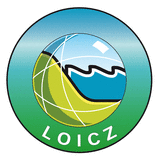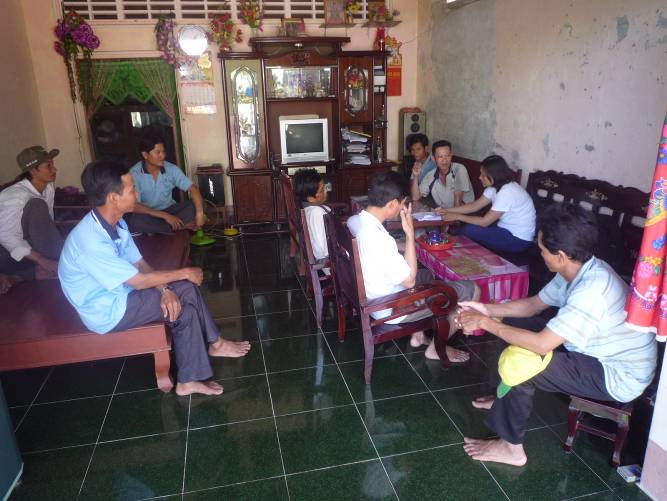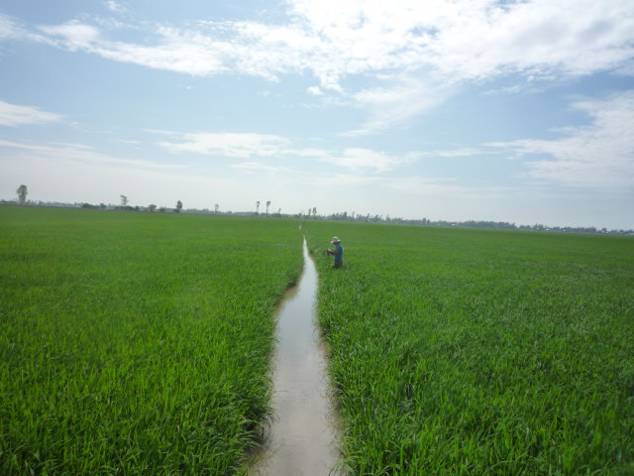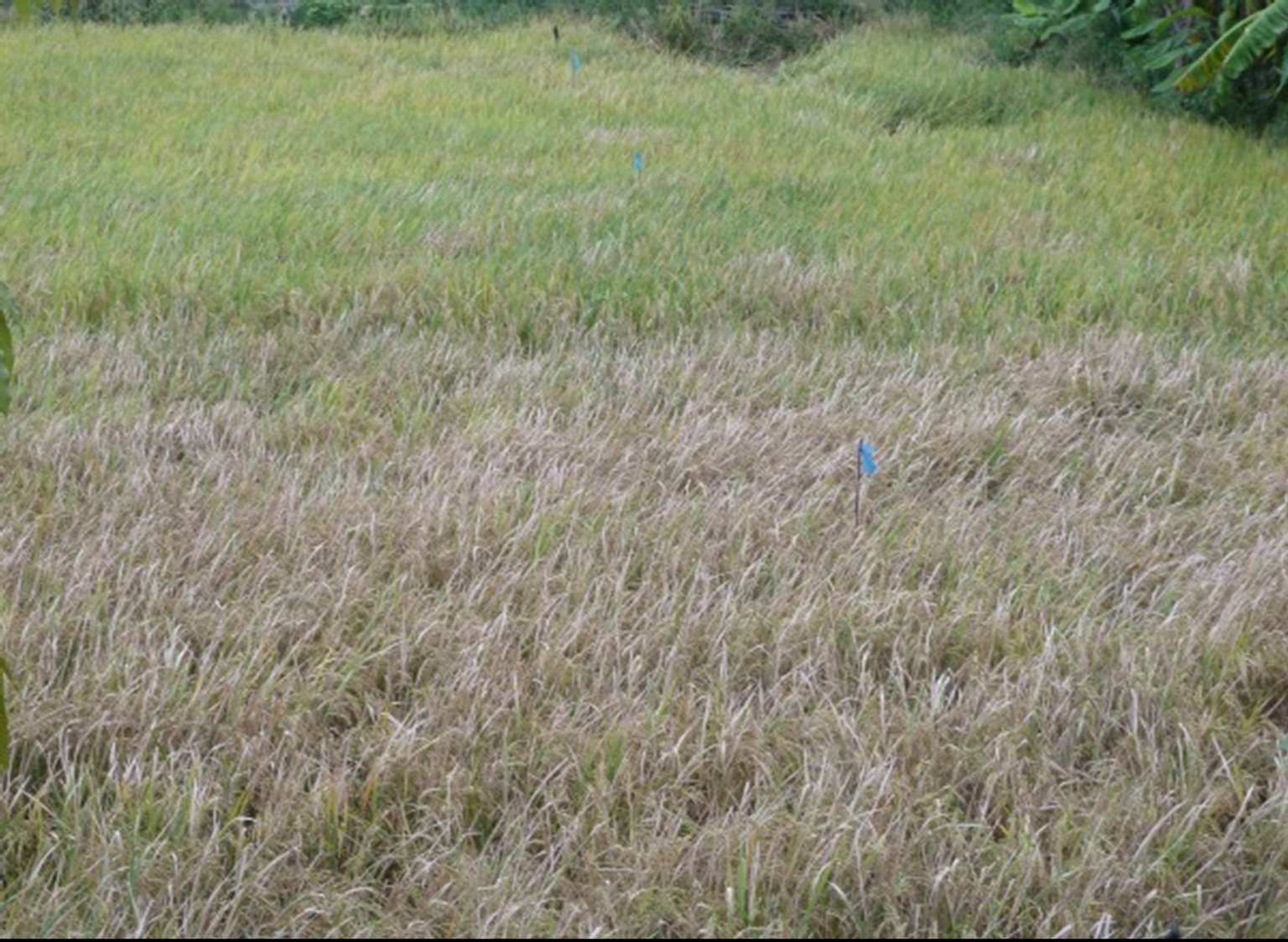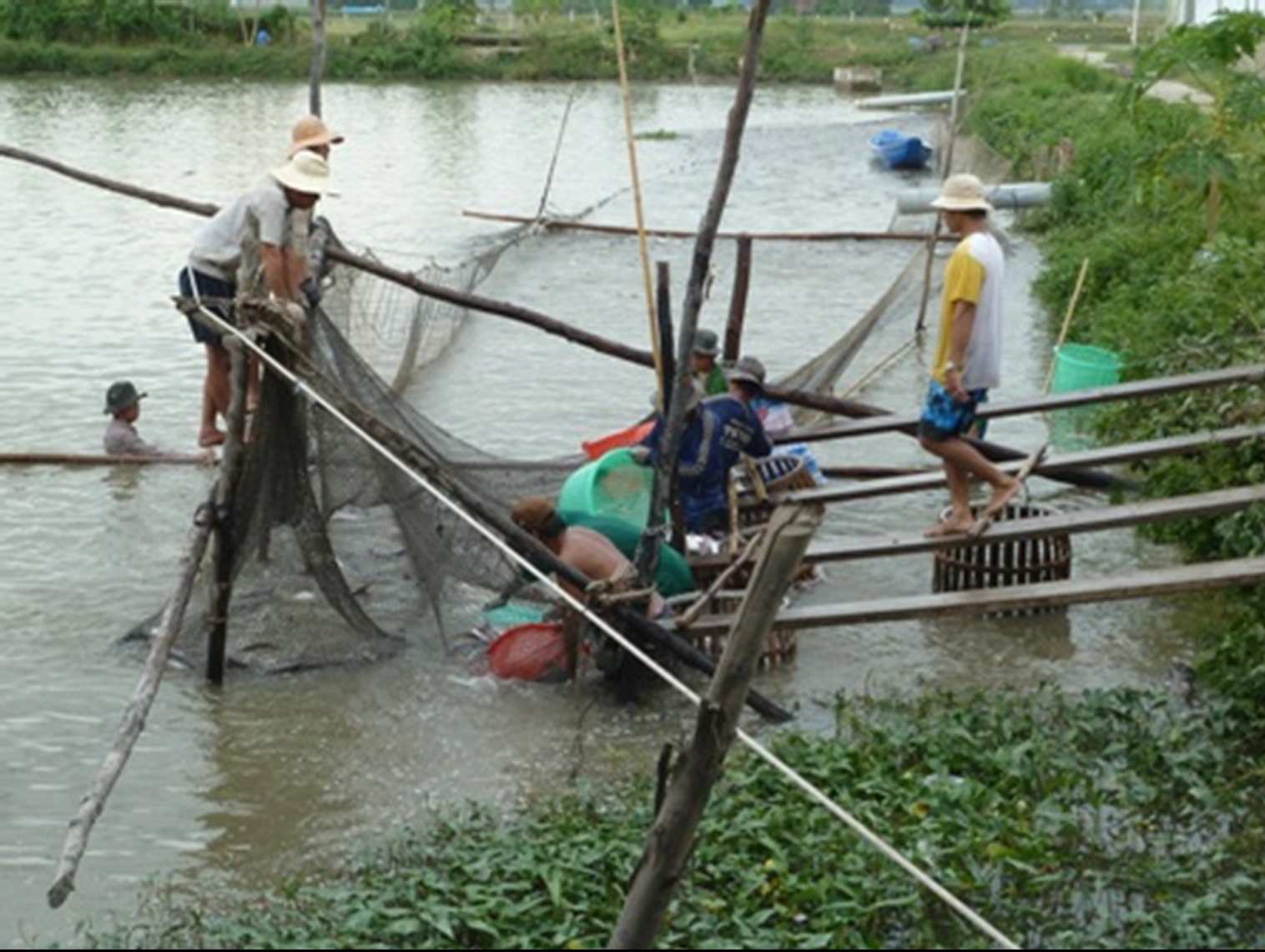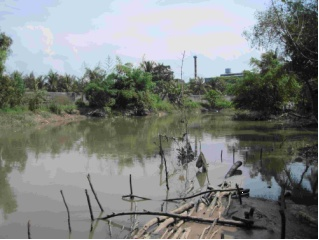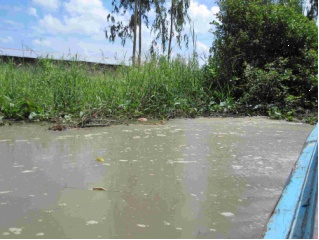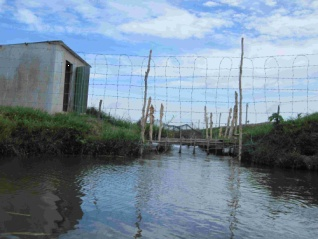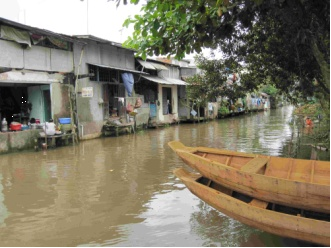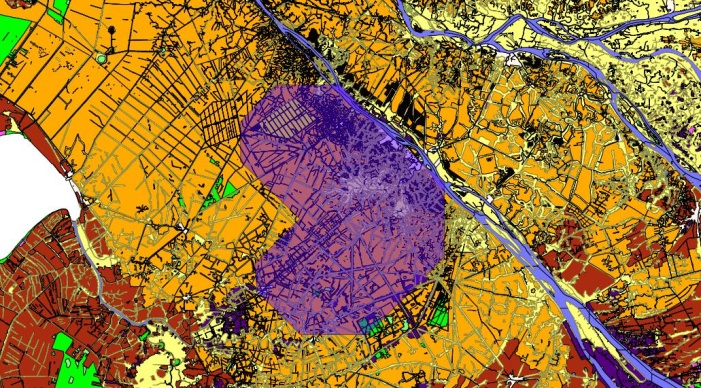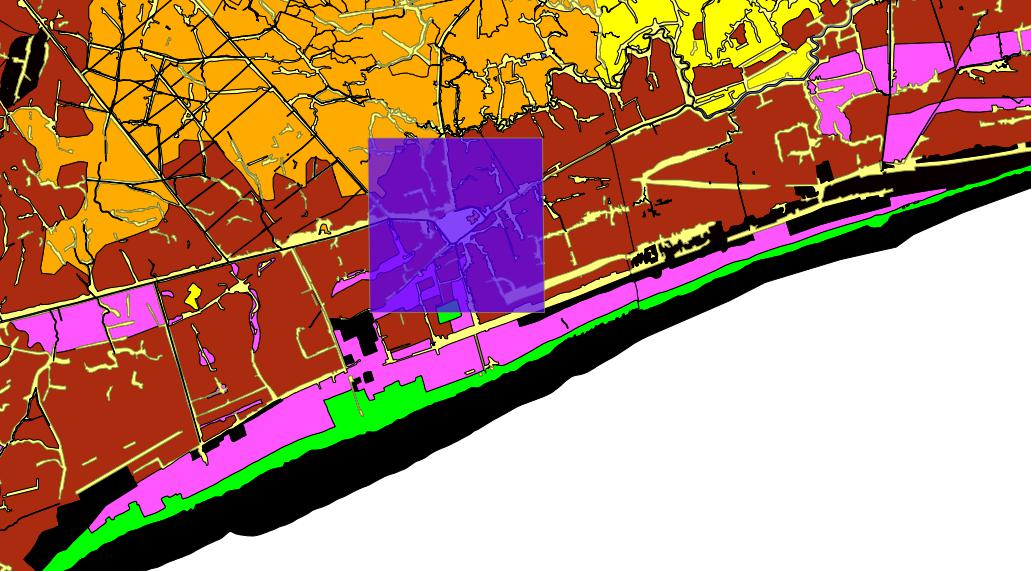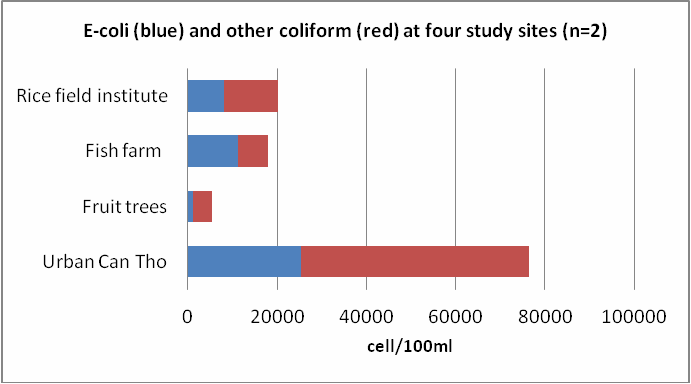Pesticides, nutrients, antibiotics in the Mekong Delta
Main activities in the project part „ Pesticides, nutrients, antibiotics in the Mekong Delta” are field research on the following topics
- Environmental footprint of agricultural practices with respect to surface water pollution (PhD thesis La Thi Nga, jointly supervised with INRES - Plant Nutrition, University of Bonn)
- Development of risk assessment (hot-spot) maps for drinking water quality (pesticides and antibiotics) in the Mekong Delta (PhD thesis Nguyen Dang Chau, jointly supervised with INRES – Soil Science, University of Bonn)
- Risk Assessment of surface-, and groundwater quality associated with drinking and irrigation purposes for selected nutrients, heavy metals and microbial pollution in the Mekong Delta, Vietnam (PhD thesis Gert-Jan Wilbers, jointly supervised with INRES - Plant Nutrition, University of Bonn
1. Environmental footprint of agricultural practices with respect to surface water pollution
This project component explores the relationship between different rice-based systems and adjacent management practices of pesticides and fertilizers and surface water quality in the Mekong delta. Current farming practices in representative rice systems and their footprint in terms of water pollution will be compared with pollutions originating from fields applying good practices such as Global GAP and Viet GAP systems in the three provinces Can Tho, Hau Giang and An Giang.
Site selection was performed between August and November 2011 and was guided by the aim to identify sample sites which fulfil the following criteria:
- Representative for the prevailing soil types in the Delta (alluvial and slightly acid sulfate soil)
- Representative and intensive farming systems such as triple or double paddy rice and double rice-upland crop rotation
- Controlled irrigation, no influence of tide from the sea
- On the same soil type, under similar water regime and same crop schedule selection of sites applying „traditional“ and good practices
- No other source of contamination (communal sewage, industrial discharges, etc) in the proximity of the sites
- Farmers are willing to cooperate (allow taking samples in their fields, willing to provide information on irrigation schedule and application of agrichemicals etc.)
From August to December 2011, 178 interviews were carried out, including 35 interviews in Truong Lac (Omon, Can Tho), 30 in Thoi Long (Omon, Can Tho), 15 in Vinh Thanh, (Can Tho), 62 in Phung Hiep (Hau Giang), 5 in Chau Thanh (An Giang) and 31 in Chau Phu (An Giang).
Based on the above mentioned criteria and the outcome of the interviews, three sites were selected at the following locations: Chau Phu/An Giang, Phung Hiep/Hau Giang and Vinh Thanh/Can Tho. In Chau Phu/An Giang the group of best practice-Global Gap farmers holds a GAP certificate since two years. In Vinh Thanh/Can Tho farmers are joining Global Gap for the first year and have been receiving the GAP certificate for the first year of their practice, even though, they started to apply corresponding practices few years ago. In Phung Hiep/Hau Giang farmers are practicing Viet Gap practices since two years but they did not apply yet for an official certificate issued by the Government of Vietnam.
The interviews aimed to gather information on general conditions of household and of the farm, farming patterns, seeding rate, cultivars used, crop yield and use of agrichemicals. The focus of the interviews were on the latter by asking for detailed information about fertilizer and pesticide use (amount, frequency, products, exact dates of application etc.), and irrigation scheme.
The cropping patterns in the study sites are different in terms of time of cultivation and harvesting. Farmers in Phung Hiep/Hau Giang sow their rice late in the year as compare to other places, while in Truong Lac and Thoi Long, Omon-Can Tho, all farmers grow a short duration rice cultivar (IR50404, 85 growing days), therefore they can have three crops per year. In Phung Hiep/Hau Giang, and in Vinh Thanh/Can Tho, farmers grow different rice cultivars with longer cultivation time (OM cultivars, more than 100 days), and have to deal also with a longer period of flooding, therefore they can only grow two rice crops per year. In An Giang, most farmers grow a good quality cultivar (Jasmine 85, 110 days of cultivation), and face also a longer flooding period, so that they grow two crops per year likewise. At each site three individual fields were identified for both normal and best-practice farmers. In total, 18 sites are sampled until August 2012.
Following parameters are considered for the analysis:
General parameters (EC, DO, pH), ammonium, nitrate, nitrite, phosphate, total nitrogen, total organic carbon (TOC), soil texture and 16 pesticides fenoxaprop-P-ethyl, butachlor, difenoconazole, azoxystrobin, tebuconazole, trifloxystrobin, hexaconazole, isoprothiolane, pretilachlor, propiconazole, thiamethoxam, chlorfluazuron, quinalphos, cypermethrin, fenobucarb, and fipronil.
|
Fig 1. Household interviews and group discussion in Phung Hiep/Hau Giang (November 2011) |
Fig 2: In situ measurements in Chau Phu/An Giang (December 2011) |
2. Development of risk assessment (hot-spot) maps for drinking water quality (pesticides and antibiotics) in the Mekong Delta
This project component aims to identify the main pollution sources and assess their influence on drinking water quality with regard to pesticide and antibiotic use in the Mekong delta. The results will be compiled in GIS based risk maps of drinking water quality by linking hazard (pollution) and exposure (water use for drinking and for other domestic purposes).
Site selection was performed between August and November 2011 aiming to identify sample sites which are representative for
1) Dominant land uses (rice field, orchard, live stock farm, aquaculture farm, industrial area, residential area)
2) Characteristic soil types: alluvial soil, acid sulfate soil
3) Relevant cropping system: double rice crop, triple rice crop
4) Different irrigation management types: closed dyke system, none closed dyke system
5) Surface water use for drinking or other domestic activities
Based on the above criteria, possible sites were explored in the provinces Can Tho, An Giang and Tra Vinh from August to September 2011 by contacting relevant state authorities at province, district and commune levels, environmental or aquaculture extensionists, and reviewing relevant provincial reports on current environmental status. Afterward, screening interviews were conducted in 3 communes in Can Tho, 3 communes in An Giang and 4 communes in Tra Vinh. As a result of the screening, Tra Vinh was rejected as a possible site since on the predominantly saline soil people reported to mainly consume groundwater from depths varying between 70 to 130m which means that the exposure to surface water was not sufficiently high to fulfil the selection criteria number 5.
To gather information about the pesticide use 110 group and individual interviews were conducted at household level. Additionally, 5 pesticide shop owners were interviewed. Furthermore, 17 household interviews were conducted at fish farms and pig farms, and 3 interviews in shops selling veterinary medicine and foodstuff for cattle in Can Tho and An Giang.
Sampling sites and sample collection
As a result of the screening phase six sampling sites were selected as follows:
Site 1: Nga Ngay canals in Thoi Lai/Can Tho
Site 2: Muong Bo canal in O Mon/Can Tho
Site 3: Phuoc Hai canal in Co Do/Can Tho
Site 4: Thanh Nien canal, Thoai Son/An Giang
Site 5 and 6: Vinh Tre and Can Thao canals in Chau Phu/An Giang
Besides these 6 sites, surface water samples are taken at the Tra Noc industrial zone in Binh Thuy district, Can Tho city which represents water pollution from industrial activities, and samples at the inlet of water supply stations of Can Tho city, O Mon district, Thoai Son district and Chau Phu district will also be taken. Samples are collected from beginning of February 2012 to February 2013.
|
Fig 3. Yellow leaves/blight disease of rice |
Fig 4. Pangasius harvest in An Giang |
Selection of pesticides and antibiotics for the monitoring
Sixteen frequently used pesticides (fenoxaprop-P-ethyl, butachlor, difenoconazole, azoxystrobin, tebuconazole, trifloxystrobin, hexaconazole, isoprothiolane, pretilachlor, propiconazole, thiamethoxam, chlorfluazuron, quinalphos, cypermethrin, fenobucarb, and fipronil) and three antibiotics (enrofloxacine, sulfamethoxazole and trimethoprime) were selected for monitoring.
A multi-residue pesticide analysis method was developed based on Laabs et al (2007) in Vietnam. For antibiotic analysis, a combination of the methods published by Golet et al. (2001) and Göbel et al. (2004) was used.
References:
Golet, E.M., Alder, A.C., Hartmann, A., Temes, T.A., Giger, W. (2001) Trace determination of fluoroquinolone antibacterial agents in urban wastewater by solid-phase extraction and liquid chromatography with fluorescence detection. Analytical Chemistry, 73, 3632-3638.
Göbel, A., Thomsen, A., McArdell, C.S., Alder, A.C., Giger, W., Theiß, N., Löffler, D., Ternes, T.A.
Extraction and determination of sulfonamides, macrolides, and trimethoprim in sewage sludge
(2005) Journal of Chromatography A, 1085 (2), pp. 179-189.
Laabs, V., Wehrhan, A., Pinto, A., Dores, E., Amelung, W. (2007) Pesticide fate in tropical wetlands of Brazil: An aquatic microcosm study under semi-field conditions. Chemosphere, 67, 975-989.
3. Risk Assessment of surface-, and groundwater quality associated with drinking and domestic use for selected nutrients, salinity, heavy metals and microbial pollution in the Mekong Delta, Vietnam
This project component aims to assess pollution sources of nutrients, salinity, heavy metals and microbial pollution, to identify the contribution of different land use types to water quality problems and demonstrate it in spatial digital risk maps.
Site selection was performed between August and October 2011 and was guided by the following criteria 1) land use, 2) soil type, 3) representativeness for the Delta and 4) logistical limitations.
- Following land use systems were considered for sampling: rice fields, orchards, livestock farms, fresh water aquaculture, salt water aquaculture, urbanized areas and industrial zone.
- Following predominant soil types were selected to be represented by sample sites: alluvial soil, acid sulfate soil and saline soil.
- The judgment about the sample sites´ representativeness for the delta was made on the basis of literature research and expert opinion.
- The majority of the sample locations were selected close to Can Tho City (within 40km) to reduce transportation time to laboratory since nutrients and especially microbial parameters have to be analyzed within a few hours after sampling. Moreover, all land-use systems and soil types as mentioned under 1) and 2) (except saline soils and saline aquaculture) can be found around Can Tho City.
Groundwater sample sites follow the surface water sites.
Selection process
Extensive literature review, interviews with specialists, consultations with authorities (O’Mon, Co Do, Thot Nhot) and own household surveys showed that high percentage of the Delta’s inhabitants in rural areas is still relying on surface water and groundwater extracted from wells for drinking as well as domestic use. These two sources are expected to be most polluted by anthropogenic influences (land-use types) as well as natural aspects (soil types). Therefore, this study focuses on surface water and groundwater since these two sources are expected to have highest risks related to drinking and domestic uses.
For the study sites selection a two-step approach was chosen:
1) Firstly relevant authorities (DONRE of Can Tho, O’Mon, Co Do and Thot Nhot) were consulted for study site suggestion according to the selection criteria. Employees of these governmental institutes did suggested interesting study sites such as orchard fields in O’Mon, extensive pig farms and fish farms in Co Do and representative shrimp farmers in Soc Trang.
2) Additionally a large number of possible sites were visited based on soil maps and land-use maps. At each of those places local people where consulted to receive information about land-use systems and soil type. Moreover, by using motorbike and boat large areas around Can Tho City and Soc Trang have been investigated in detail to select the sites that best met the selection criteria. Additionally to land use and soil type the hydrology of the site was investigated to decide whether a location was suitable or not. For example, an area with intersections of 5 channels was not considered as a possible site since it would prove too difficult to investigate the source of that particular water.
In order to get information about the sources for drinking water and water for other domestic use as well as about possible sources of pollution a questionnaire has been developed. People in rural areas (mainly fruit farmers, fish farmers, rice farmers) have been interviewed randomly in all study sites.
From August 2011 to June 2012 ca. 300 interviews were conducted. Based on the interviews it is clear that surface water and groundwater extracted from wells are still used as first drinking water option. The differences in the study sites are considerable though. In some areas, bottled water and/or piped-water network is available which reduces the amount of surface- and groundwater for drinking purposes massively. However, even in those regions surface- and groundwater are still used on a large scale for domestic uses including washing, bathing and cooking. Moreover, the questionnaire provides insight in sources of pollution from rice fields, fruit trees and fish farms since questions are asked about emission effluents and locations. The outcome of the interviews influenced also selection of the exact locations of the sample sites.
Selected sites for surface water sampling
Surface water samples are collected at more than 30 sites in Can Tho Province, Hau Giang province and in Soc Trang provinces.
|
Fig. 1: Industrial Zone |
Fig. 2: Pig Farm |
|
Fig. 3: Aquaculture |
Fig. 4: Urban Area |
Selected sites for ground water sampling
|
Fig. 5: Groundwater sampling are in Can Tho - Hau Giang |
Fig. 6: Groundwater sampling area in Vinh Chau, Soc Trang Province |
Groundwater samples are collected randomly every 25km2 to get a sufficient overview in the two regions. Similar grid sizes have been applied in other studies with success (Buschmann et al., 2008; Berg et al., 2006). In total 74 samples will be collected in Can Tho/Hau Giang and around 15 in Vinh Chau/Soc Trang Province. Only shallow groundwater (50-100 meter below surface) will be considered since water from those depths are most frequently used by people in these regions.
Studied water quality parameters
Following parameters are considered for the analysis:
General parameters (EC, DO, pH, turbidity, salinity, TDS), ammonium, nitrate, nitrite, phosphate, total nitrogen, chemical oxygen demand (COD), chloride, total organic carbon (TOC), sulfate, microbial contamination (E-coli/total coliform), and heavy metals (As, Al, trace metals).
Results
An example is given for the microbial indicators (E-coli and other coliform bacteria). The graph below shows the average amount of coliforms during two field campaigns in November and December 2011.
|
Fig. 7 Average amount of E.coil and Coliforms during 2 field campaignes and E-coli/Coliforms count plate, 3M, USA |
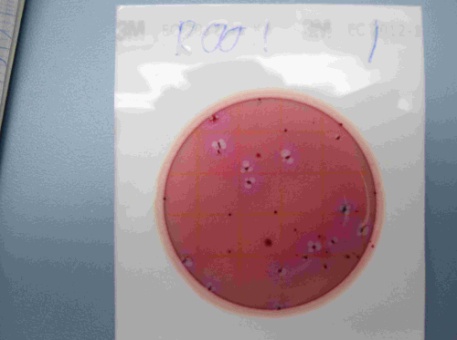 |
Water samples taken from fruit tree fields contain around 5,500 coliform bacteria / 100ml while surface water in urban areas in Can Tho City counts 75,000 coliform bacteria /100 ml.
The drinking water quality guidelines of WHO states that zero bacteria should be present in drinking water sources. The graph above shows the risks associated with microbial pollution in the surface water of the Mekong Delta clearly.
Another investigations of Isobe et al. (2002) noted high microbial pollution as well in the Mekong Delta. This study reported amounts of total coliforms between 1 – 10.000.000 per 100ml measured at 59 locations widely spread over the Mekong Delta. The first two field campaigns were performed during wet season and could explain why high cell counts as reported by Isobe et al. (2002) where not occurring.




